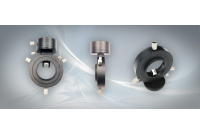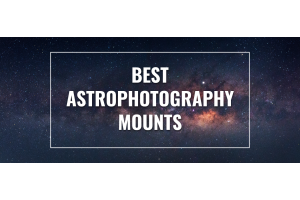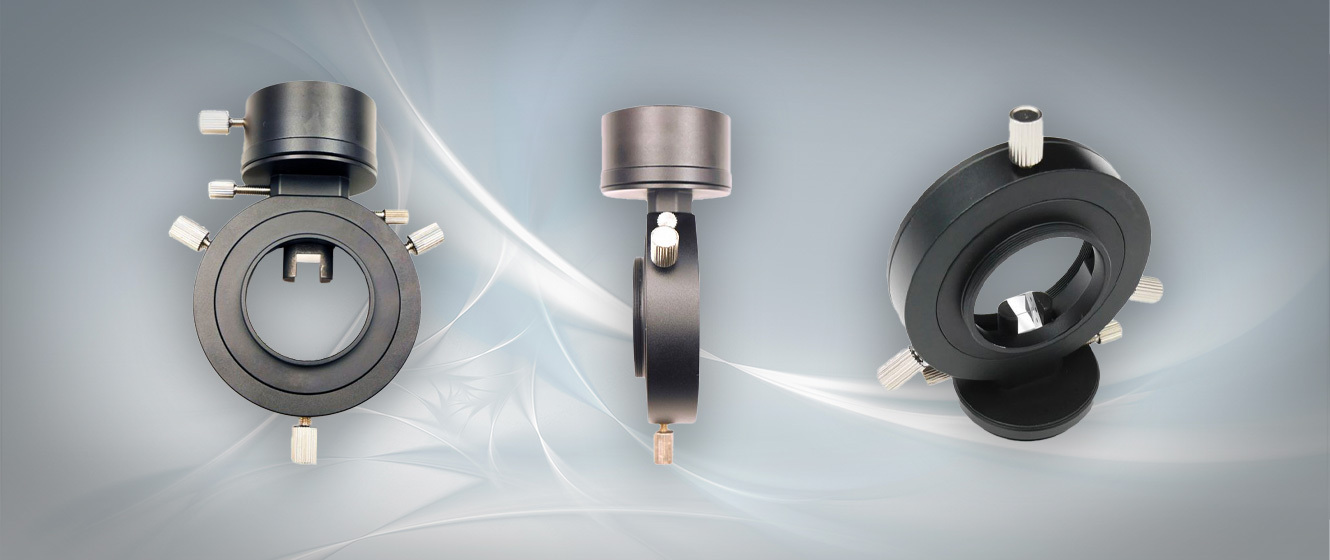
Autoguiding is one of the most effective ways to increase your sub-exposure time. By using a guide camera and a guiding software such as PHD2, one can send commands to their equatorial mount to help produce consistently round stars and sharp details. For more information on a complete autoguiding breakdown, visit this article here: Autoguiding.
Autoguiding is typically done with a separate guide scope. While it can provide accurate results, an off-axis guider (OAG) is the ultimate way to guide your astroimaging rig. While it is rather easy to describe what a separate guide scope and guide camera look like, an off-axis guider is a bit more difficult to describe. Please refer to this photo of a ZWO OAG as we describe its functionality!

Off-Axis Guiders are typically used with dedicated astronomy cameras and are placed inside the imaging train itself:
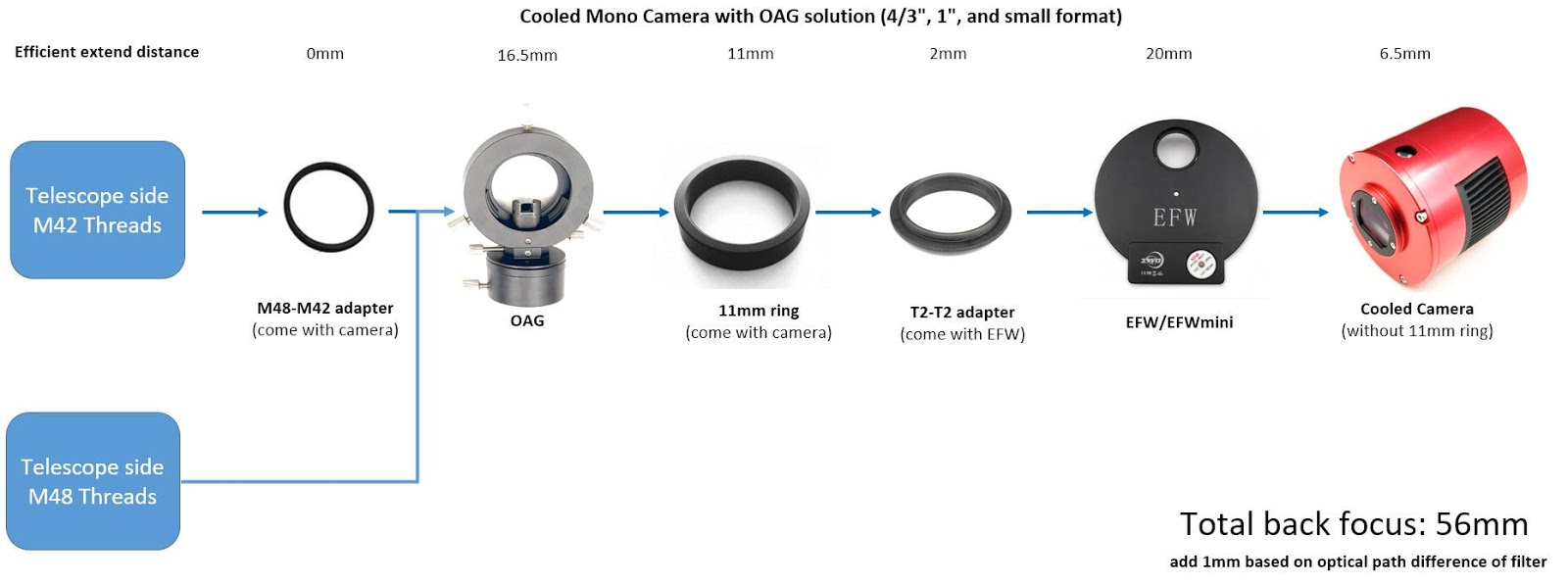
These do not sit on top of the scope like a traditional autoguiding system would. Off-axis guiders use the main imaging scope to direct light to the guide camera rather than a guide scope. A small prism drops down from the OAG and picks off light from the light path coming through the imaging scope which is then directed upwards to a guide camera that sits above the prism.
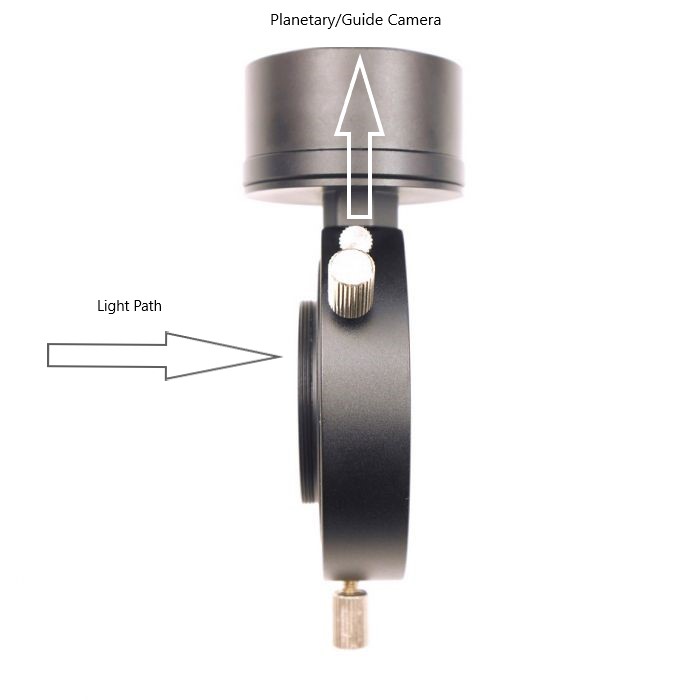
Off-axis guiders are the optimal way to guide your mount and it eliminates the need for a guide scope. While guide scopes work well for shorter focal length imaging scopes, they can ever so slightly move around during an imaging session causing “flexure”. This is very noticeable when guide scopes are used with longer focal length scopes like Newtonians, RCs and SCTs. This “flexure” results in oblong stars. When using a guide scope, we recommend that the focal length of the guide scope is at most ¼ the focal length of your imaging scope. If the differences between the two scopes is greater than a 1:4 ratio, there is an increased risk for inconsistent guiding results. For example, if you are using an 11” SCT with a focal length of 2800mm, a guide scope of 700mm would be recommended! This is far too large for a guide scope therefore the OAG is the best option.
OAGs can be used with any size telescope and will likely provide better results than a guide scope will. While many advantages come with using an OAG, there are reasons why they are not as popular as the alternative. It is typically feared that finding a guide star or achieving focus is near impossible with longer focal length scopes. The longer the focal length, the more narrow the field of view, thus resulting in less stars to pick up through the OAG’s prism. While this is true, the sensitivity of guide cameras have increased dramatically over the last couple of years making this much less a problem than it used to be!
When you are looking to purchase an OAG, we recommended staying within the brand of your camera. Popular manufacturers like ZWO and QHY produce OAGs with a specific width in mind that fits very well with their like-branded filter wheels and spacers. We recommend using a ZWO OAG if you are using a ZWO cooled astronomy camera and a QHY OAG if you are imaging with a cooled QHY camera. Celestron, Baader, and Orion offer off-axis guiders for more custom imaging solutions too. That being said, if you already have an OAG that you think may work with your camera, give it a shot! Your product advisors at High Point Scientific would be happy to assist you in this as well.
Focusing your off-axis guider can be done in the daytime by pointing your scope towards an object far away near the horizon. This will ensure that you are closer to focus when you bring your scope out for an imaging session. Pointing towards the moon or a star-rich area of the sky is a perfect way to dial in your focus even further. It is highly recommended that you focus your dedicated imaging camera first and then achieve focus with the OAG. If you focus your OAG first and then focus your dedicated imaging camera, your OAG will now be out of focus as they both sit in the same imaging train!
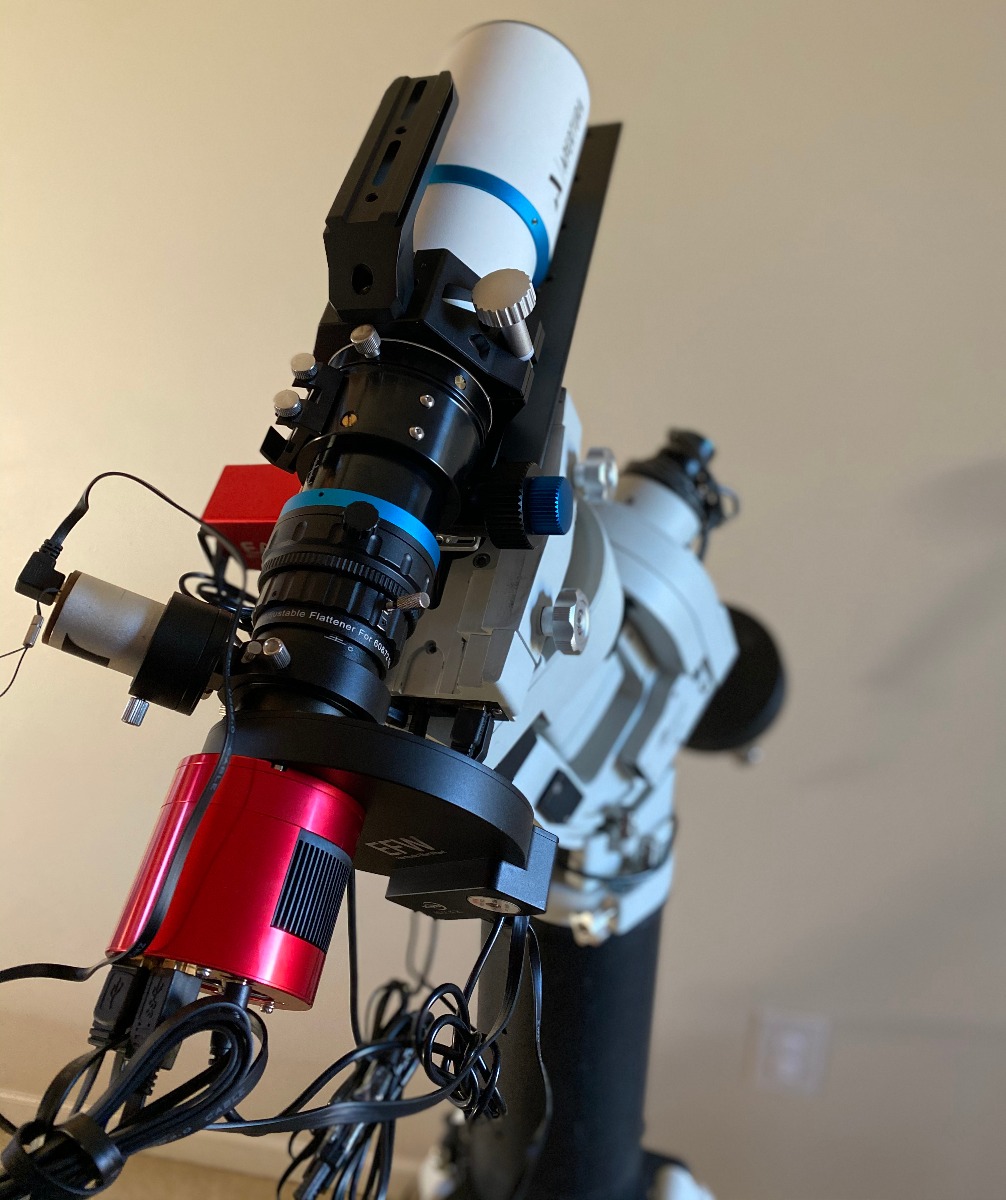
Off-Axis Guider with Short Focal Length Refractor
Autoguiding, regardless if you are using a guide scope or off-axis guider, will improve your mount's ability to track the motion of the objects in the night sky. Guide scopes have always been and will always be a great introduction into autoguiding. OAG’s on the other hand have the ability to improve your guiding results even further and can be used with all focal length scopes. When it comes to high resolution imaging systems with long focal length scopes, OAG’s are the recommended way to go.

If you have any questions or hesitations about introducing an off-axis guider into your astrophotography setup, please feel free to reach out to our non-commissioned product advisors. They are well versed in astrophotography and are always happy to help!
Click the arrow above to see MLA, APA, and Chicago Manual of Style citations.
MLA:
High Point Scientific Team. "Off Axis Guiding," AstronomyHub, High Point Scientific, 24 Jul. 2023, https://www.highpointscientific.com/astronomy-hub/post/astro-photography-guides/off-axis-guiding.
APA:
High Point Scientific Team. (2023, July 24). Off axis guiding. High Point Scientific. https://www.highpointscientific.com/astronomy-hub/post/astro-photography-guides/off-axis-guiding
Chicago Manual of Style:
Bibliography:
High Point Scientific Team. "Off Axis Guiding," AstronomyHub (blog), High Point Scientific, July 24, 2023. https://www.highpointscientific.com/astronomy-hub/post/astro-photography-guides/off-axis-guiding.
Footnote:
High Point Scientific Team, "Off Axis Guiding," AstronomyHub, High Point Scientific, July 24, 2023. https://www.highpointscientific.com/astronomy-hub/post/astro-photography-guides/off-axis-guiding.
This Article was Last Updated on 07/24/2023





